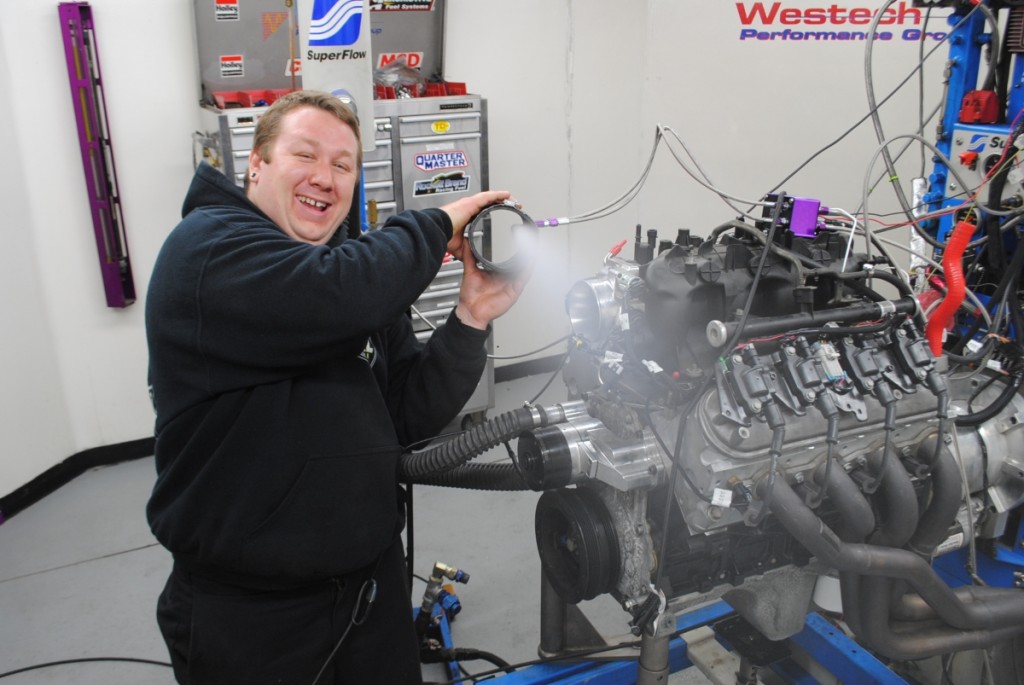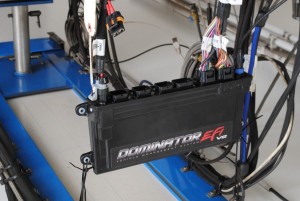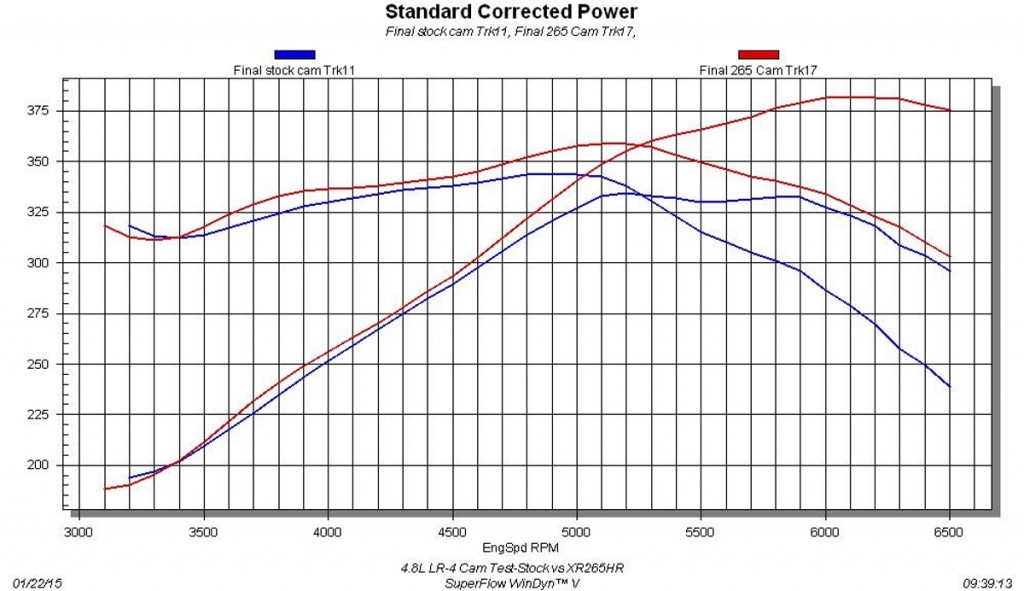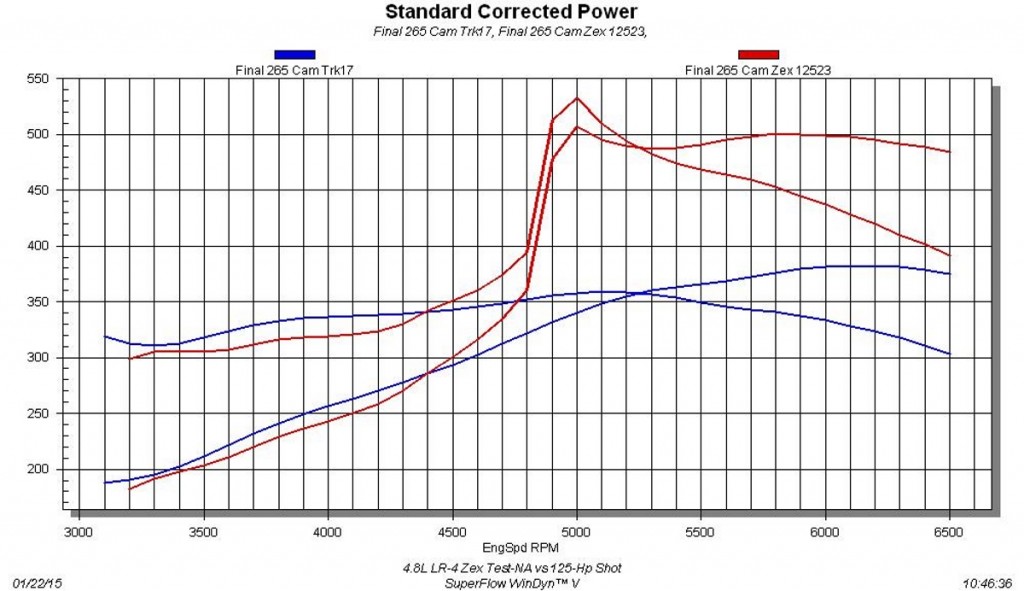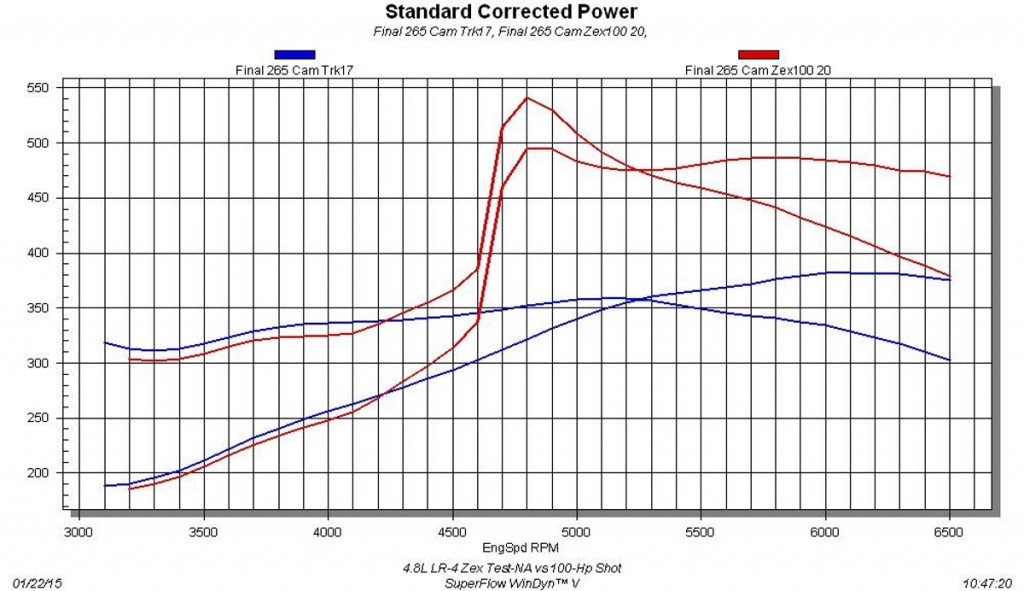By Richard Holdener
In the performance world, there is an old saying, “Speed costs, how fast do you want to go?” The meaning of this is simple: The greater the performance, the bigger the bucks. Cost has always been the one thing that stands between us and our dreams of having a serious performance street machine. Sure, we all want a twin-turbo, nitrous injected stroker motor but, how many of us can actually afford to build such an animal? Unfortunately, luxury items such as food and shelter often take the lion’s share of the budget that might otherwise be sacrificed in our quest for speed. Given the price of performance, who among us isn’t looking to get the most bang for their performance buck? When it comes to bang-for-the-buck builds, it is hard to find a better starting point than the 4.8L LR4 (or big brother LM7 5.3L). These LS-based truck motors have quickly become the defacto swap and performance mills of the modern performance era. To illustrate how to maximize power while minimizing cost, we strapped a high-mileage 4.8L LR4 to the dyno and applied two of the best bang-for-the-buck upgrades known to man.
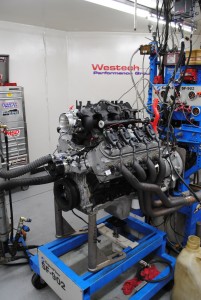
The stock 4.8L engine was equipped with long-tube headers, Accufab throttle body, and a Meziere electric water pump for our test.
One of the keys to a successful performance motor build or upgrade is to set a realistic goal. Everyone wants 1,000 hp, but the reality is that not only is such a build cost prohibitive, there is an argument about just how useful such an engine is in the real world (especially as a daily driver). This particular build was designed around the limitation that it must be able to serve double duty as both a daily driver and weekend warrior. The package must serve equally well at both, while maintaining the all-important, low-buck status. To that end, we selected 500 horsepower as a reasonable (and powerful) performance goal, but such power must also come from the little 4.8L without negatively affecting drivability or costing a stack of cash. Plucked from a wrecking yard, the 4.8L already offered an exceptional combination of price and performance, but in stock form it wasn’t going to get us to our goal of 500 hp. Walking the line between price and performance, we test the top two bang-for-the-buckers for our LR4-a cam and nitrous oxide.

The first upgrade was to replace the wimpy stock cam with this XR265HR grind. The new cam offered at .522/.529 lift split, a 212/218 duration split and 114-degree lsa.
By now, enthusiasts understand that a cam swap should always be the first upgrade you make to any LS, and nitrous oxide is a virtual legend in the bang-for-the-buck community. Of course choosing the right cam and nitrous also makes a big difference, especially the cam profile. Since the camshaft all but determines the character of the engine, choosing the right cam for the intended application is critical. This is especially true when camming a daily driver. Getting big power gains on your LS is easy with a cam swap, but doing so while minimizing cost and maintaining drivability is more difficult. To help keep costs down we selected a cam that required no valve spring upgrade. The XR265HR cam offered a .522/.529 lift split, a 212/218 duration split and 114-degree lsa. The low-lift cam meant we could get by with the stock springs (though a 26915 or 918 beehive spring upgrade is a good idea) and the mild duration specs offered a good combination of power, drivability and idle characteristics.
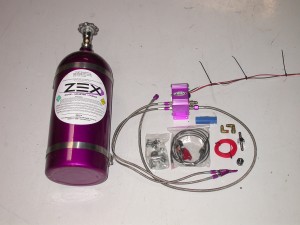
The ZEX Wet EFI nitrous kit included the bottle, controller and single fogger nozzle along with jetting to adjust the power level from 75 hp to 125 hp.
In addition to the COMP Cam, we also enlisted the aid of a ZEX Wet EFI nitrous kit. The universal Wet EFI kit included everything we needed to install the system on our 4.8L LR4, though the kits are shipped with empty bottles. The bottle must be filled at a local filling station, but that was no problem as Westech Performance is set up to fill our 10-pound purple bottle to the brim. The wet kit is so named because it combines both nitrous and fuel into a single fogger nozzle then injected the mixture into the intake manifold. To make things easy for our dyno test, the fogger nozzle was installed in a silicone hose connector positioned in front of the throttle body. For safety reasons, the ZEX kit also features a controller that ensures the nitrous would not activate until the TPS signal indicated the throttle body was at WOT. You don’t want the system engaging at part throttle (or lower engine speeds), as damage may occur. The ZEX kit is adjustable from 75 hp up to 125 hp through the supplied jetting. For our test, we ran both 100 hp and 125 hp jetting. There is nothing like hitting the button and having the power output of your motor jump by 125 hp at the push of a button. Nitrous rules!
The first order of business was to establish a baseline with our high-mileage 4.8L. For dyno use, the LR4 was configured with a manual throttle body from Accufab, a set of long-tube headers feeding dyno mufflers and a Meziere electric water pump (no other accessories). The 36-pound FAST injectors were tuned using a Holley Dominator EFI system, and we flushed the oiling system with a fresh batch of Driven Racing Oil. Run on 91-octane pump gas with a peak of 31 degrees of timing and at an air/fuel ratio of 13.0:1, the stock 4.8L produced peak numbers of 333 hp at 5,900 rpm and 344 lb-ft of torque at 4,900 rpm. Despite the diminutive displacement, torque production exceeded 300 lb-ft from below 3,000 rpm to 5,800 rpm. The cam swap was a breeze on the dyno, and after installation of the COMP XR265HR cam, the peak numbers jumped to 382 hp at 6,100 rpm and 359 lb-ft of torque at 5,100 rpm. Not only were the peak numbers up, but the new cam offered more power through the entire curve, always a good sign. Out at 6,500 rpm, the cam swap netted a gain of 80 hp!
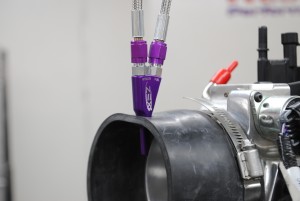
We made sure to properly aim the nozzle to direct the nitrous and fuel directly into the throttle body and intake manifold.
The cam swap was a solid success, but now it was time to push the power peak up to the 500 hp mark. To do so we needed some serious juice, and the ZEX wet kit was just what the doctor ordered. For our test, we installed the single fogger nozzle in a silicone hose coupler positioned in front of the Accufab throttle body. It was awesome to be able to see the stream of fuel and nitrous injected straight into the intake when we hit the button. We hooked the nitrous bottle and fuel supply lines to the controller per the instructions and installed jetting to supply an additional 100 horsepower. We also made sure the bottle pressure was above 900 psi (external bottle temp of 92 degrees) by setting it in the Westech bottle heater. After setting up the controller to recognize the TPS/WOT voltage, we purged the system and backed off the ignition timing by 4 degrees. On the very first hit, we were rewarded with peak numbers of 487 hp and 541 lb-ft of torque. Stepping up to 125 hp jetting resulted in 501 hp and 512 lb-ft of torque (we hit the button slightly later on this run resulting in a lower peak torque reading). Having reached our goal of a daily-driven, 500 horsepower, there were high fives all around.
Installation of the COMP XR265HR cam was by every measure a huge success, as the cam swap improved the power output through the entire rev range. The COMP Cam pushed the peak numbers from 333 hp at 5,900 rpm and 344 lb-ft of torque at 4,900 rpm to 382 hp at 6,100 rpm and 359 lb-ft at 5,100 rpm. Peak to peak, the gains were 49 hp and 15 lb-ft of torque, but out at 6,500 rpm, the cam offered an additional 80 horsepower.
Things started to get serious once we added the ZEX Wet EFI nitrous kit. Using the 100 hp jetting, we heated the bottle up and let ‘er rip. True to form, the 100 hp shot increased the peak numbers from 382 hp and 359 lb-ft of torque to 487 hp and 541 lb-ft of torque. Nitrous is so cool-just hit the button and all that wonderful power is at your disposal. We like the on-demand nature of nitrous, and that all the extra power has no effect on things like idle quality or daily drivability. It is the ultimate stealth secret.
As impressed as we were with the power gains offered by the ZEX Wet EFI kit, we still had not reached our goal of 500 horsepower. This allowed us to demonstrate another important aspect of nitrous, its versatility, or more accurately the adjustability. We needed another 18 horsepower to reach our goal of 500 hp so we installed jetting to do just that. Run with 125 hp jetting, the daily-driven, COMP-cammed, nitrous-injected 4.8L produced 501 hp. That my friends, deserves a serious high five!
Sources
AccuFab
accufabracing.com
COMP Cams
compcams.com
FAST
fuelairspark.com
Holley
holley.com
ZEX
zex.com


